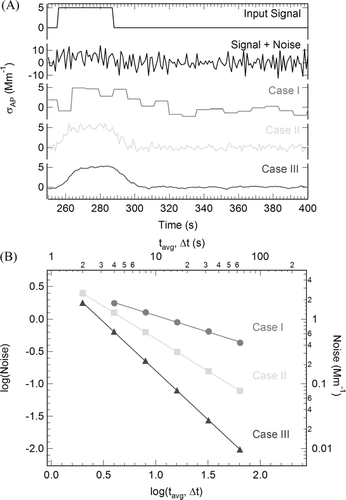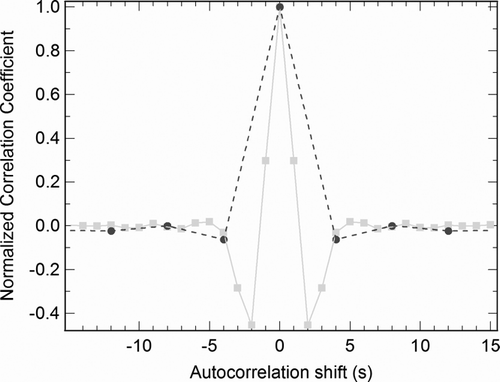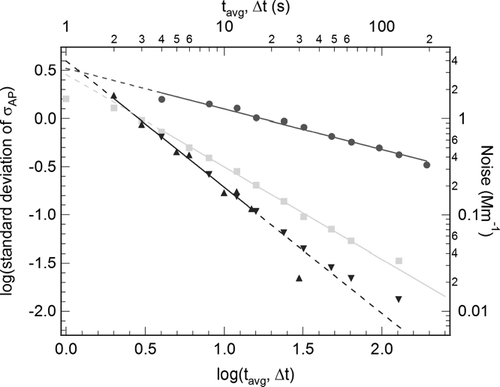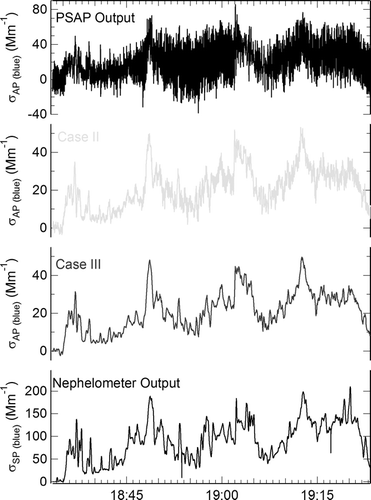Figures & data
FIG 1 (a) Simulation of PSAP processing. From top: Idealized square input signal with a width of 32 s and a height of 5 Mm−1; Signal with white Gaussian noise superimposed on the transmittance. Magnitude of noise is 2.5 × 10−6 times the transmittance (note different ordinate scale); Noisy signal processed with Case I (•) and tavg = 8 s; Noisy signal processed with Case II (▪) and tavg = 8 s; Noisy signal processed with Case III (▴) and t = 8 s. (b) Log noise as a function of log averaging/summation time with linear regression fit. Case I, slope = −0.5, Case II, slope = −1.0, Case III, slope = −1.5.

FIG 2 Histogram of PSAP output values (blue channel, N = 7244) while sampling HEPA filtered air. Absorption coefficient measured with instrument t = 2 s.

FIG 3 Autocorrelation of PSAP output values (blue channel) while sampling HEPA filtered air. (▪) Data as output every 1-s by the PSAP, (•) t = 2 s. The same data taking only every fourth point. These data are independent.

FIG 4 PSAP measurement data (blue channel) of HEPA filtered air. Log noise as a function of log averaging/summation time with linear regression fit. Compare with (b). Case I (•), slope = −0.42, Case II (▪), slope= −0.96, Case IIIA (▴), Case IIIB (∇), slope = −1.31. Solid lines are linear regression over the points used. Broken lines are extrapolations. Unused points are explained in the text.

FIG 5 PSAP measurement data (blue channel) during MAX-MEX '06. From the top: PSAP output as recorded with t = 2s; Case II, top trace subjected to a running boxcar average, tavg = 12 s; Case III, hexadecimal intensities used to calculate absorption coefficient with t = 12 s; Nephelometer data (blue channel) from the same period showing features only apparent on the PSAP data processed with Case III.
